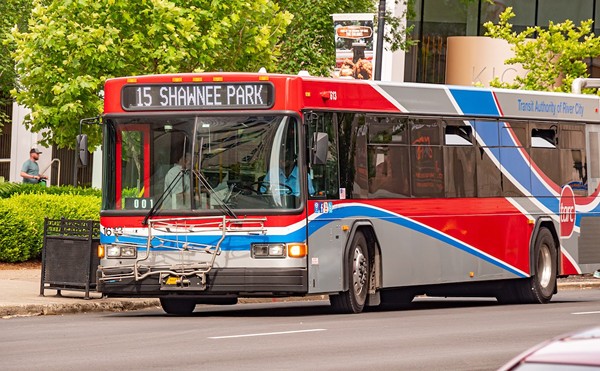Louisville’s official policy of keeping white and black students in separate schools ended 50 years ago this fall. The change, on the heels of the landmark Brown v. Board of Education decision, put our city in national headlines, hailed by The New York Times and other outlets as a shining example for the rest of the country.
Louisville’s experience stood in sharp contrast to places like Little Rock, where the Supreme Court’s Brown decision had been met by bullets, bullies and bullhorns. The Times referred to the situation here as “a quiet social revolution in a gateway to the South.”
What few could have predicted at the time, however, was how Louisville — in the mid-1970s and again earlier this month — would become a critical factor in America’s long fight to balance opportunities for whites and blacks.
In the 1950s, simply ending forced segregation did little to actually integrate schools. Real integration did not occur for another 19 years, when a federal court ordered whites and blacks to be bused between the city and county schools. That made Louisville the first city in America to bus kids across districts, and put it right back in the national headlines, where it stayed for months.
Whites — mostly from Valley Station and other blue-collar areas of the county — resisted bodily. Although schools stayed in session, the city turned violent. Thousands marched in the afternoons, and people got hurt, according to coverage in the Times.
“We had a riot on our hands,” former Gov. Julian Carroll said in an interview last week. “I was not about to let an abuse of law and order take place.”
He called up about 1,000 Kentucky National Guardsmen — and ordered them to slip into the city unnoticed and wait unseen at the Fairgrounds. Several hundred state troopers were gathered at the rest stops, just minutes outside the city, he said. When the crowds would not disperse — and a police station was set on fire in Shively — Carroll gave the order.
“Within 10 minutes after the decision to send the troops in was made, the soldiers were on the streets. It was the shock value, which I had played on, of that that shut the riot down,” Carroll said.
But news accounts show that the Guard’s impact, while perhaps averting a tragedy, didn’t put out the fires just yet. From Jeffersontown to Shively to Valley Station, groups as large as 5,000 to 10,000 gathered to protest the busing. No one was killed, but there were hundreds of arrests over the next several days, and injuries, including one to a young boy, were reported. A school bus was set on fire, and the next week President Gerald Ford canceled a trip to Louisville, citing the civil unrest.
“There was a great concern, especially for the safety of the students,” recalled Raoul Cunningham, who was then an aide to U.S. Sen. Walter D. Huddleston in Washington. “There was also concern that the city was dividing and falling apart among racial lines.”
Gov. Carroll filed suit to try to stop the busing, and Congress convened hearings.
Despite the lingering tensions, however, busing did not stop, and whites and blacks found themselves together in classrooms, often for the first time. Other cities followed suit, and experienced worse violence than here — enough for Louisville to earn, again, a reputation as a place of moderation.
Thirty-one years later, our schools are still integrated, even if court-ordered busing has given way to a voluntary system of race-based school assignments. But some things have not changed. Louisville’s neighborhoods, for instance, are still nearly as segregated as they were decades ago. Whites may go to school with blacks in Louisville, but they typically don’t live near them.
For some, that’s proof enough that classroom integration doesn’t work. If, 50 years after the end of forced segregation, whites and blacks still choose to live in segregated neighborhoods, shouldn’t that tell us something?
It’s not an idle question; once again Louisville’s school integration plans are back in the national headlines. When the Supreme Court hears a case out of Louisville challenging the use of race in making school assignments, it will be hearing it alongside a similar case from Seattle. In the Seattle case, a dissenting appeals court judge, arguing that policies that make race a factor in school assignments are unconstitutional, wrote that it is segregated neighborhoods, not school policies, that keep schools segregated.
“The racial imbalance in Seattle’s schools,” wrote the dissenting appellate court judge, “results not from … any invidious exclusion of nonwhite minorities from the schools. Instead, it results from racially imbalanced residential housing patterns, an issue which the district does not even contend it can alter. Hence the method chosen by the district to impose racially balanced schools is fatally flawed.”
If that thinking proves persuasive to the newly configured Supreme Court, Louisville’s history of dealing with school integration could be headed for another sharp curve. That would undo decades of progress painfully paid for by this city, said Georgia Powers, the first black and the first woman to serve as a Kentucky state senator.
“If the Supreme Court invalidates the student assignment plan, we will be regressing,” she said. “We would go back to the old segregated schools. They call them neighborhood-centered plans, but it would be re-segregating school.”
Cunningham agreed.
“The reality would be that West End schools would revert to nearly all-black schools, and East End schools would revert to nearly all-white schools,” he said.
If Brown v. Board of Education was right — that separate can never mean equal — that would be a radical retreat.
Charles Morgan, director of the Washington office of the ACLU, put it another way in 1975 during a conference in Louisville.
“White folks ain’t going to put their money where their children ain’t,” he said. “It is just that simple.”
Unfortunately, if the court agrees with the dissenter from Seattle, we may find out anew whether it’s still really that simple.
Contact the writer at
[email protected]





